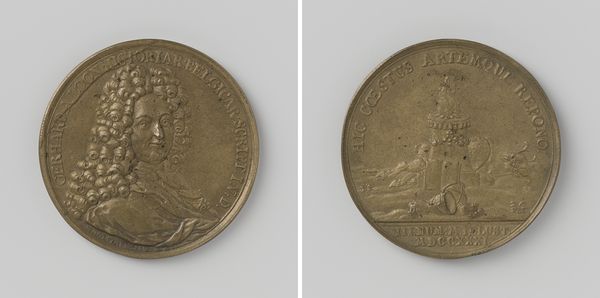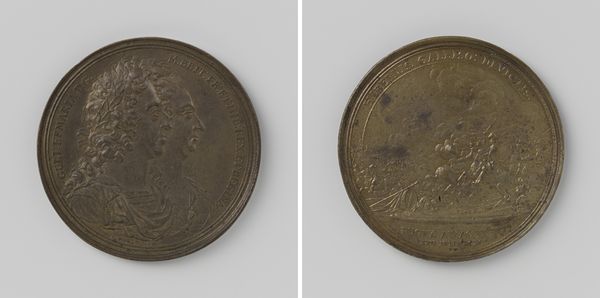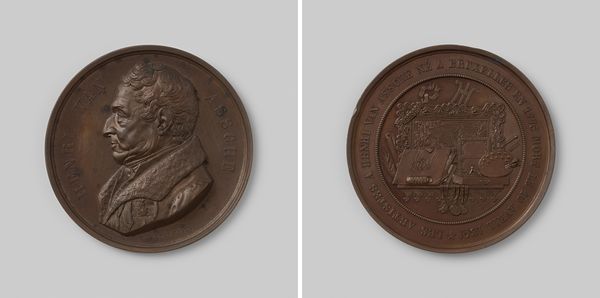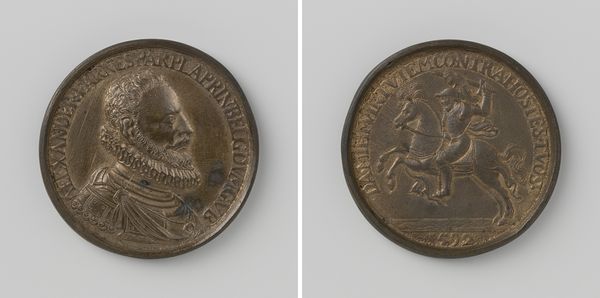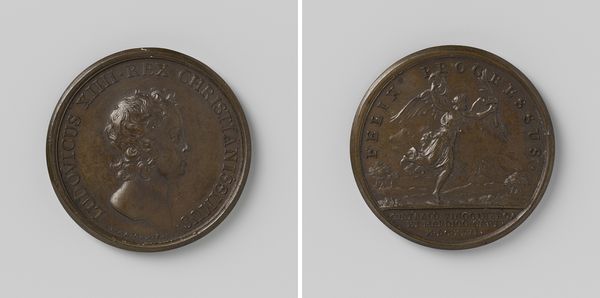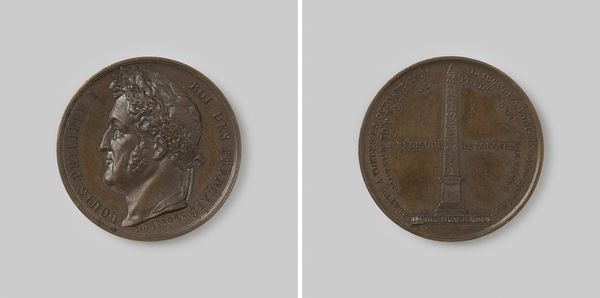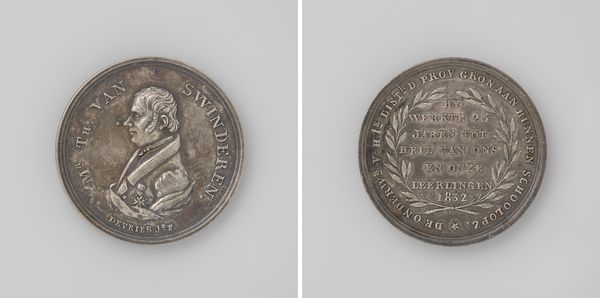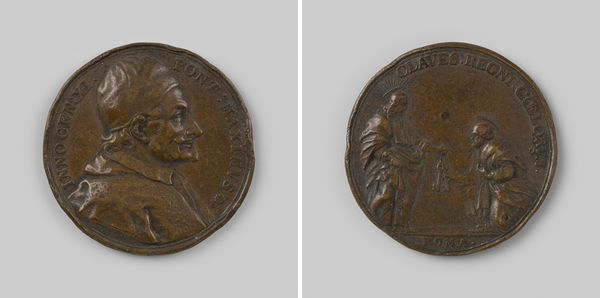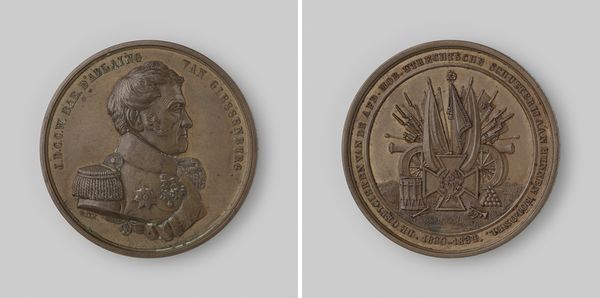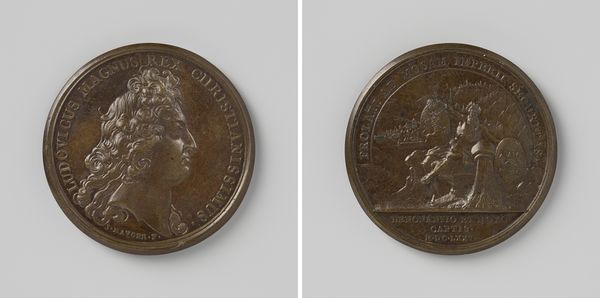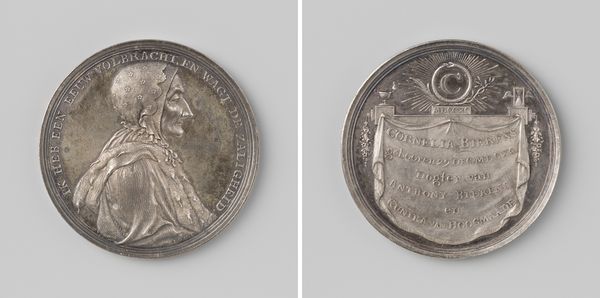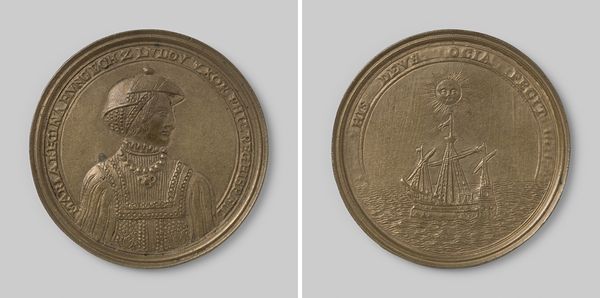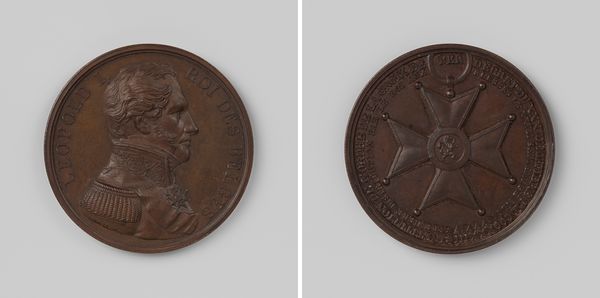
Verovering van twee Algerijnse schepen door hopman Mooy Lambrechts, penning ter ere van prins Maurits 1620
0:00
0:00
metal, bronze, sculpture
#
portrait
#
narrative-art
#
metal
#
stone
#
sculpture
#
bronze
#
sculpture
#
history-painting
Dimensions: diameter 5.6 cm, weight 32.75 gr
Copyright: Rijks Museum: Open Domain
Curator: This bronze medal from 1620 commemorates the "Conquest of Two Algerian Ships by Captain Mooy Lambertz, in Honor of Prince Maurice." It offers us a fascinating window into Dutch maritime history and self-perception. Editor: It's a powerful little thing, isn't it? The subdued sheen of the metal, and those crisply rendered scenes give a sense of steadfast, enduring authority. The ocean looks rather tempestuous. Curator: Absolutely. The medal was created by Gideon d’Assigny and presents Prince Maurice, a significant figure in the Dutch Revolt, alongside this victory. But the ‘victory’ needs unpacking. We must situate it within a period rife with religious conflict, colonial ambition, and brutal power dynamics, notably the rise of European maritime power and its interactions, shall we say, with the North African coast. Editor: It’s interesting to me how victory is symbolized here. On one side we have a stately, classically-inspired portrait of the Prince, but the other offers a dynamic, if miniaturized, scene of naval conquest. Do those ships represent an actual historical event, or were they designed as a representation of Dutch Naval superiority? Curator: Likely a rendering of a specific event, used to amplify Dutch prowess and reinforce a specific, and of course biased, narrative of righteous triumph, crucial for bolstering national identity during the Eighty Years' War. It’s interesting to note the textual details which circumscribe both scenes; on one side celebrating Prince Maurice, and on the other detailing the date and significance of the naval victory. What ideological work were these types of commemorative objects achieving at the time? Editor: And were such medals only displayed, or were they also handled? Passed around to further amplify the emotional effect? It seems like the tactile experience would enhance the symbolic power, anchoring this event as both history and propaganda. You have this victorious image, small, but made permanent in metal; weighty, tangible proof of power. Curator: Indeed. Today, such objects serve as poignant reminders of the complex intersections of art, power, and history, demanding that we analyze the narratives they promote. Editor: Looking at this medal allows me to consider the emotional lifespan of an object like this: designed to rally patriotic sentiments, later collected, examined and now analyzed within an entirely new framework. The layers of meaning are fascinating.
Comments
No comments
Be the first to comment and join the conversation on the ultimate creative platform.
